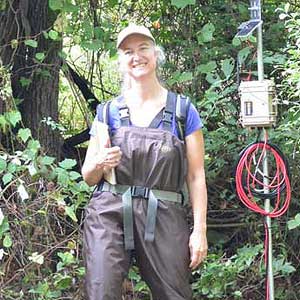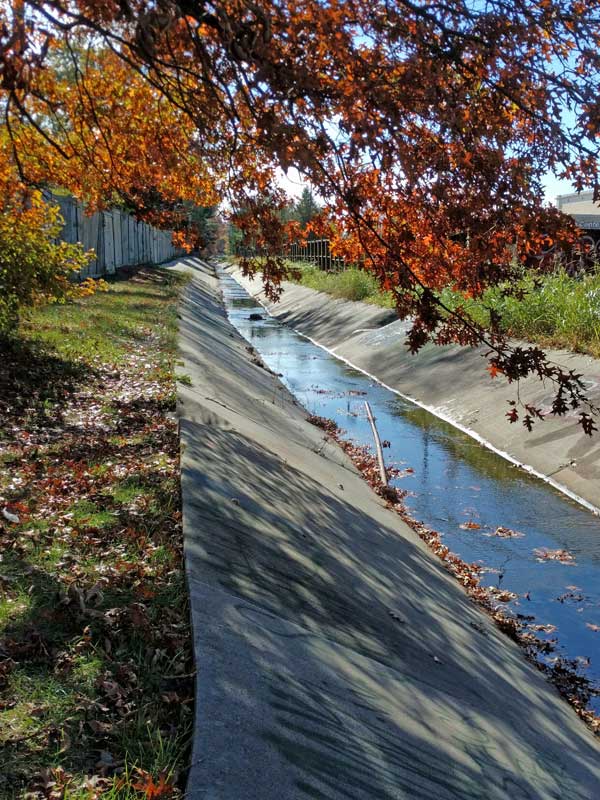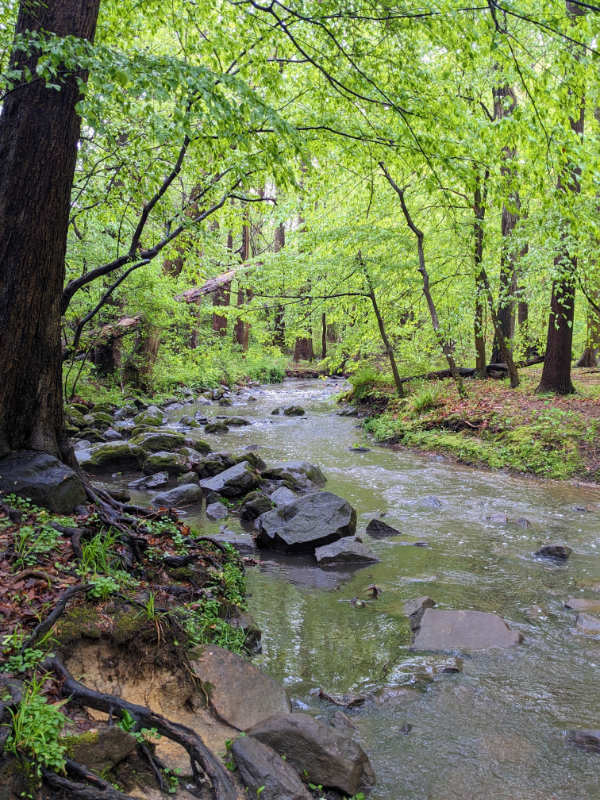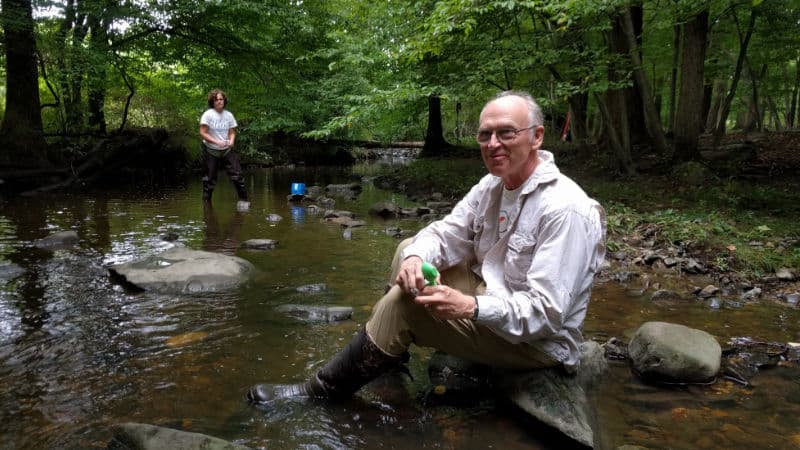
By Kim Hachadoorian, Stream Stewards Project Manager, The Nature Conservancy in Pennsylvania and Delaware
When the rain comes, it reaches the earth and travels the path of least resistance, drawn by gravity and a seeming wanderlust. In forests and meadows, the rain’s journey will be meandering and leisurely. It will drip off leaves and soak into soil. Some of this water will be absorbed by thirsty plant roots, and some will continue to wend through underground channels, eventually flowing into a stream or river.

By contrast, in cities and suburbs, the rain’s progress is usually direct and hasty as it rolls off rooftops and runs down roadways into storm drains and a system of underground pipes. During a heavy rainfall these pipes can send a deluge into waterways, causing them to overflow. That’s when serious flooding can occur. But we can alleviate this problem by using nature to slow the rainwater and allow it to spread out.
Rocky Run is a multifaceted little stream in Wilmington, Delaware, that demonstrates both these rainwater trajectories. One section of Rocky Run flows through the serene woods of First State National Historical Park into Brandywine Creek, which eventually joins the Delaware River. But before all of that happens, the water in Rocky Run must travel through a concrete channel, along a busy roadway crowded with shopping malls and parking lots. Rainwater flows rapidly over these paved surfaces, downhill and into the stream.
If you are in the park when the rain comes, standing on the bank of Rocky Run among the towering tulip trees, you will see the water level rise quickly, completely submerging the large rocks you stepped upon to cross the stream. The surface of the water may have an oily sheen or a film of soapy looking bubbles. And you will likely see a regatta of trash, washed off the paved surfaces and carried into the stream by the rain.

Then, like water draining from a bathtub, the level recedes as quickly as it rose. This happens because the land in the park gives the water somewhere to go. No longer constrained by a concrete channel, the stream can spread out over the banks like a blanket. Then it seeps into the soil, finding passage through connected vertical air spaces that create finger-like tunnels for the rainwater to travel down. The soil is a sponge that stores and cleans the water and then releases it slowly back into the stream.
If we add more of these natural sponges to our urban areas by increasing green spaces, we can lessen flooding and create a filtration system that delivers cleaner water to the rivers that provide drinking water for many of us. Every park, every garden, every green space, no matter how small, can help with this effort. Nature gives rainwater the time and space to slow down and spread out. We can’t stop the rain, but we can change our cities so that when the rain comes, it has somewhere to go.
Who are the Stream Stewards?
In First State National Historical Park in Wilmington, Delaware, a dedicated team of trained community science volunteers has been conducting water quality monitoring since 2016. Known as the Stream Stewards, these volunteers collect data and maintain six EnviroDIY Monitoring Stations located along streams that feed into Brandywine Creek, which supplies 100% of Wilmington’s drinking water, offers abundant recreational opportunities, and provides essential habitat for native plants and animals.
Led by The Nature Conservancy in partnership with the park and Stroud Water Research Center, the Stream Stewards engage in science-based conservation to protect and improve fresh water in Delaware.

In addition to data collection, individual Stream Stewards maintain and repair monitoring equipment during regularly scheduled site visits.
With guidance from the Stroud Center, a subset of volunteers recently piloted a protocol for conducting a salt snapshot, to assess the impact of salt in groundwater feeding the park’s streams.
Many other volunteers regularly attend events hosted by The Nature Conservancy to raise awareness of the ways we all can contribute to a healthy watershed. Each of the volunteers brings passion and expertise, and that is what makes Stream Stewards a successful program.
Learn More About the Stream Stewards
Read
- The Power of Citizen Science
- Through a Scientist’s Lens: Training Citizens in Freshwater Stewardship
Watch



